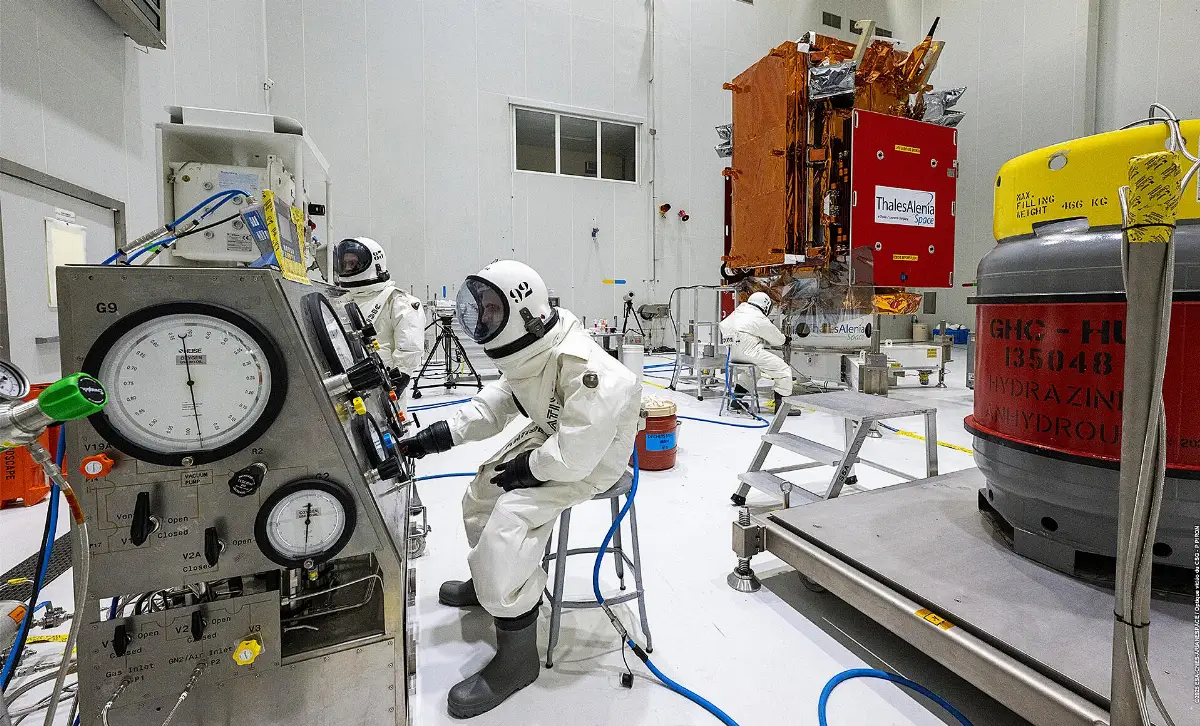
Sentinel-1D refuelled and ready for encapsulation
The launch campaign of the next satellite that will join the Copernicus Sentinel-1 mission is proceeding

Launch scheduled for Tuesday 4 November 2025 aboard an Ariane 6 rocket
The launch campaign for the next satellite that will join the Copernicus Sentinel-1 mission is proceeding on schedule for the launch on Tuesday 4 November, aboard an Ariane 6 rocket. The Sentinel-1 mission provides radar images of the Earth's surface, operating in all weather conditions, day and night. This service is vital for disaster response teams, environmental agencies, maritime authorities, climate scientists and other users who rely on frequent updates of critical data.
Sentinel-1D is the next satellite of the mission and is ready to join its twin, Sentinel-1C. Once fully operational, it will replace Sentinel-1A, which has been in orbit for 11 years, well beyond its planned service life.
Sentinel-1D and -1C will generate data and images using a C-band synthetic aperture radar (SAR) instrument, which acquires high-resolution images of the Earth's surface. They are also equipped with an Automatic Identification System (AIS) instrument to improve detection and tracking of ships. When both are operational, more frequent AIS observations will be possible.
The spacecraft's Flight Readiness Review took place last week, clearing the way for Sentinel-1D's fueling.
The mission's Project Manager, Thibaut Decoopman, explained that the team is now finalizing the satellite's launch configuration before preparing the vehicle for encapsulation. He said: "Since arriving in French Guiana, Sentinel-1D has successfully completed the final stages of integration and has passed the functional tests. The satellite is now fueled and in excellent condition, perfectly on time for assembly onto the launcher, thanks to the ongoing dedication of our industry colleagues and ESA team members".
The satellite will be encapsulated on Friday 24 October.
Copernicus Sentinel-1: the mission is part of the Copernicus Sentinel family of satellites, developed by the European Space Agency (ESA). Copernicus is the Earth observation component of the European Union Space Programme and is the largest environmental monitoring programme in the world. The data provided by the Sentinel missions form the basis of Copernicus' operational information services, helping to manage the environment, monitor and respond to climate change and safeguard human lives. Copernicus provides open-access data used worldwide.
Ariane 6 is the European heavy-lift launcher and a key element of ESA's efforts to ensure autonomous access to space for European citizens. Its modular and versatile design allows it to launch missions to low Earth orbit as well as those destined to travel much farther into deep space. With a height exceeding 60 metres, Ariane 6 can weigh nearly 900 tonnes when launched with a full payload.
AVIONEWS - World Aeronautical Press Agency